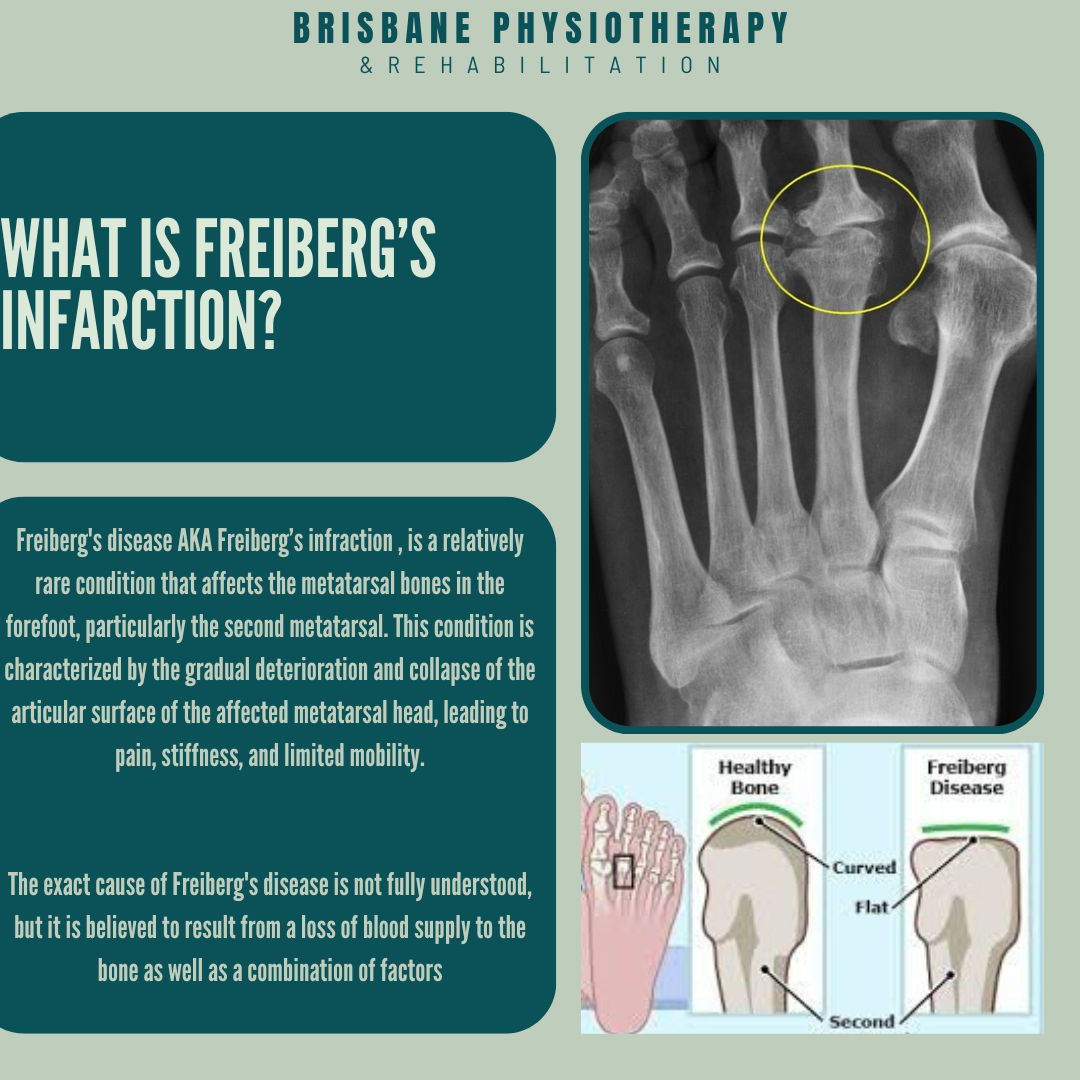What Is Freiberg’s Disease?
Freiberg's disease, also known as Freiberg infraction or osteochondrosis of the metatarsal head, is a relatively rare condition that affects the metatarsal bones in the forefoot, particularly the second metatarsal. This condition is characterized by the gradual deterioration and collapse of the articular surface of the affected metatarsal head, leading to pain, stiffness, and limited mobility.
Causes of Freiberg's Disease
The exact cause of Freiberg's disease is not fully understood, but it is believed to result from an avascular necrosis (loss of blood supply to the bone) as well as a combination of factors, including:
Mechanical Stress: Repetitive trauma or excessive pressure on the metatarsal heads, often associated with activities such as running, jumping, or dancing, can contribute to the development of Freiberg's disease.
Anatomical Factors: Certain foot abnormalities, such as a high arch (pes cavus), a short first metatarsal, or an elongated second metatarsal, may predispose individuals to develop Freiberg's disease.
Vascular Insufficiency: Impaired blood supply to the metatarsal head can lead to ischemia (lack of oxygen) and subsequent bone necrosis, contributing to the development of Freiberg's disease.
Genetic Predisposition: Some individuals may have a genetic predisposition to developing Freiberg's disease, as the condition may run in families.
Symptoms of Freiberg's Disease
Freiberg's disease typically presents with the following symptoms:
Pain: Individuals with Freiberg's disease may experience pain in the forefoot, particularly under the affected metatarsal head, which may worsen with weight-bearing activities.
Swelling: Swelling and inflammation may be present around the affected joint, contributing to pain and discomfort.
Stiffness: Stiffness and limited range of motion in the affected toe may occur, making it difficult to bend or move the toe.
Limping: Pain and discomfort associated with Freiberg's disease may lead to an altered gait pattern, resulting in a noticeable limp.
Diagnosis and Treatment Options
Diagnosis of Freiberg's disease typically involves a thorough clinical evaluation, including a physical examination and imaging studies such as X-rays or MRI scans to assess the extent of bone damage and joint involvement. Treatment options for Freiberg's disease may include:
Conservative Measures: Initially, conservative treatments such as rest, activity modification, and wearing supportive footwear or orthoses may be recommended to alleviate symptoms and reduce pressure on the affected joint.
Medications: Nonsteroidal anti-inflammatory drugs (NSAIDs) or pain medications may be prescribed to relieve pain and inflammation associated with Freiberg's disease.
Physical Therapy: Physical therapy exercises and techniques may help improve joint mobility, strengthen surrounding muscles, and enhance overall foot function.
Orthopedic Devices: In some cases, wearing a rigid-soled shoe or moonboot may help to further offload pressure and forces
Surgical Intervention: If conservative treatments fail to provide relief or if the condition progresses to a more advanced stage, surgical options may be considered to restore joint function and alleviate pain.
Conclusion
Freiberg's disease is a rare but potentially debilitating condition that affects the metatarsal bones in the forefoot, leading to pain, stiffness, and limited mobility. By understanding the causes, symptoms, and treatment options for Freiberg's disease, individuals can take proactive steps to manage their condition, alleviate symptoms, and improve foot function. Consulting with a podiatrist or physiotherapist can provide personalized guidance and recommendations for addressing Freiberg's disease effectively and preventing long-term complications. Early intervention and appropriate treatment are essential for minimizing pain and preserving joint function for individuals affected by this condition.
